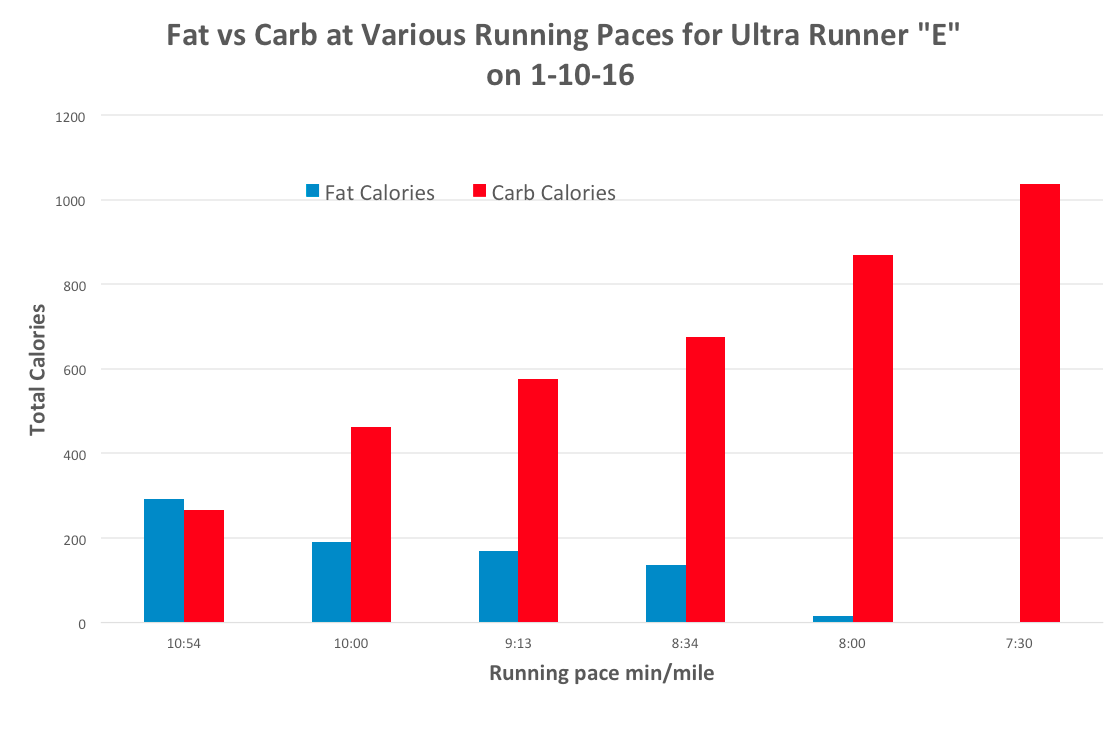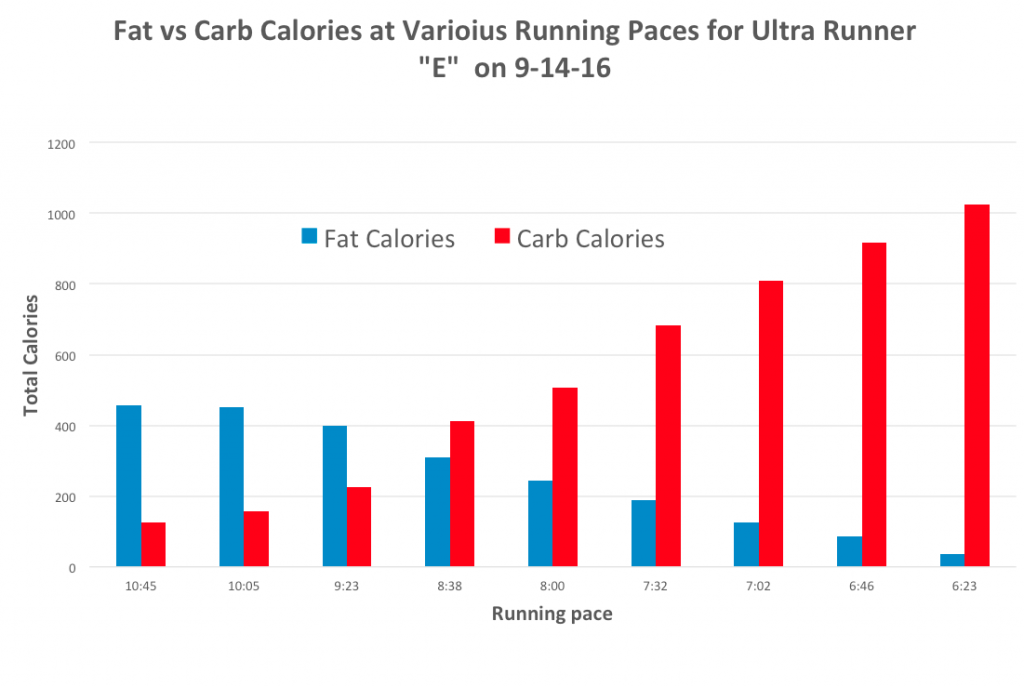Attention Uphill Athletes: The information in this article is now outdated. You can read our most recent nutrition and fat adaptation articles, written by Uphill Athlete’s registered dietician Rebecca Dent and reviewed by the Uphill Athlete team, that reflect the most up-to-date scientific findings.
The popular press has been full of stories about fat adaptation, ketogenic diets, and fasted training. This has generated a great deal of debate and controversy and is portrayed as if something new has been discovered. With our decades of experience training fat-adapted endurance athletes, we hope to clear up some misconceptions and confusion.
Fat Adaptation Is Nothing New
Many of the loudest voices promoting ketogenic diets come from the strength and conditioning (S&C) world, which dominates the fitness information sphere. The S&C world is not geared toward, and in general is not interested in, endurance sports. After all, for them “endurance” means 15 reps not 15 hours. The typical information on fat restriction training we have reviewed from the S&C world (see Note 1 below) is fine, as far as it goes. But it is evaluated from an S&C point of view, specifically as a weight loss tool for fitness enthusiasts or bodybuilders.
From an endurance perspective, these articles are like comparing apples to hubcaps. As you encounter this information keep in mind that the preponderance of popular writing is aimed at the S&C audience and this has influenced the discussion.
Presumably if you are reading this you are an endurance athlete. If so, here’s what you need to know:
- Fat adaptation does enhance endurance performance.
- Fat adaptation is simple to implement.
- Top coaches and athletes have known this for decades.
- It has recently become well understood by science.
Fat Adaptation: Proof in the Performance
Coaches of high-level endurance athletes, across a broad spectrum of sports, have known for many years that well-trained athletes can utilize fats better and at higher intensities (even at high intensity) than studies indicated was theoretically possible. Coaches assumed that this adaptation was an important key to success in competitive endurance sports. At least two scientific studies now back up the coaches (see Note 2 for more info).
The following two charts show the results of two identical metabolic tests performed on the same runner nine months apart, one at the beginning of a training season and the second after the end of the racing season. The top chart shows the preseason test; you will note the small contribution that fat makes to the overall energy demands. This is what we would refer to as a relatively poorly fat-adapted athlete.
Test number two takes place after a well-designed training program combined with minor dietary adjustments. It clearly shows the dramatic shift in the relative contributions from fat and carbs to the overall energy demands. This fat adaptation took place through the methods outlined in this article.
Of particular interest is that this runner is using significant amounts of fat for fuel even at the highest intensities/fastest running speeds. Note also that the maximum sustainable running speed in this identical test is over 1 minute/mile faster for about the same overall energy consumption. This runner has dramatically improved both their metabolic economy and their running economy.
This adaptation can be improved upon in subsequent training seasons with resultant (although diminishing) performance improvements as well.
But Where’s the Protein?
As those of you who have read Training for the New Alpinism know, endurance athletes rely on both stored fats and sugars for the energy to power their exercise. Protein can and does contribute energetically but if it is a significant source then the athlete is doing something wrong. The current buzz centers on the relative amounts of fats and sugar that are being used during various exercise intensities.
How Scientists Got It Wrong for So Long
For decades, sport scientists have told us that fat played a significant role in total energy expenditure only at low to moderate exercise intensities and that fat’s contribution was theoretically capped at a paltry amount. This meant that any and all high-intensity energy demands had to be met with sugar. They were partly correct in that this is what happens in the general population and even in the recreationally trained athlete. As is often the case in studies using college students for test subjects, the data was accurate for that population but not applicable to a well-trained athlete population who are a rare enough breed that it is hard to find 20 of them willing to simultaneously partake in a study. Understandably, they do not want to disrupt their training.
So this scientific understanding became enshrined in sports science literature and you will still find exercise scientists today who are unequivocal in stating that once the athlete reaches their Anaerobic Threshold (Note 1), fat metabolism will have entirely ceased to contribute any energy to the overall exercise demands.
New studies have shown that the rate of fat usage is much higher in trained athletes (up to twice as high as previously thought) and can be sustained to higher intensities than the conventional wisdom had us believing. To put this correction in perspective, that’s like the scientists doubling your cars horsepower and fuel economy!
What Does It All Mean?
With modification to the training and/or dietary fronts, you can shift your muscles’ preference for, and ability to use, fat as a fuel at an increased intensity. Bear in mind that these metabolic systems we speak of rather glibly are incredibly complex and interconnected. For the purposes of this article we will not delve into the biochemical details.
The two advantages accrued with this adaptation are that the fat stores in a well-trained athlete are virtually limitless from a sports duration perspective. As for sugars, anyone who has ever bonked can attest that glycogen (read: sugar) is crucial for endurance. So much so that when you deplete your glycogen stores the effect on performance is dramatic and swift. Sipping from your limited glycogen reserves while guzzling from the bottomless fat gas tank enables higher outputs for a very long time before the low fuel warning light comes on.
The second and, in our opinion, greater benefit is reduced lactate production at submaximal effort. The accumulation of lactate in the muscles beyond a certain point leads to the short-term fatigue that most of us are painfully familiar with. You don’t need to be an exercise scientist to understand that feeling that if you don’t voluntarily dial back the intensity, your body will do it for you. Being able to increase your reliance on fat at higher intensity means lower lactate levels and lower perceived exertion. Et voila! More endurance!
Header image: Here Steve House leads a crux pitch of the most difficult route on Denali, the Slovak Direct.



